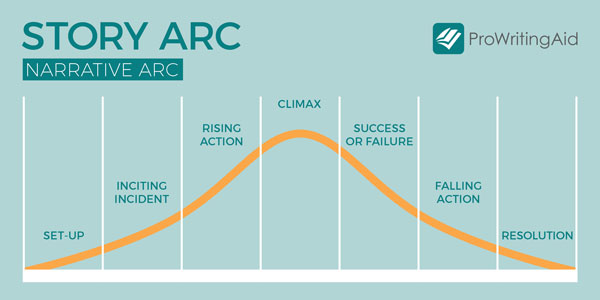
You’ve survived yet another NaNoWriMo. Congratulations! You’ve just written a book in 30 days. Now what?
First things first: put your manuscript in a drawer (or in a “Pending” folder on your computer) and let it marinate there for a couple of weeks. Then, when you feel like you’ve given enough space and time between you and your manuscript, bring it back out in the light of day. Now that your mind is fresh, you can refocus. It’s time to bring out your inner editor.
Yes, that annoying voice in your head that you had to stifle when writing for 30 days straight.
Narrative arc and character development are two essential parts of your story that require special attention. They need to be strong and consistent throughout. Only after shoring up the key structural elements can you focus on your technical writing. Click here to read our companion piece: Life after NaNoWriMo: Facing the Technical Edit like a Pro.
Narrative Arc
Your story should have a well-defined start, middle, and end. You should have action that moves your protagonist through tests or a series of adventures that fundamentally change him or her. If your main character is still the same person on page 476, not enough has happened to her.
A good narrative arc starts with a hook, accelerates to action, intensifies through drama and suspense, and eventually levels off at a high pitch until your reader gradually comes back down to earth with an emotionally satisfying ending.
While you’re aware of this requirement, sometimes it doesn’t come across as clearly in your work. Take a first read through of your manuscript with an eye to identifying the beginning, middle, and end. If you can’t pinpoint these three sections in your book, go back and make it concisely clear.
You should be looking for glaring problems in the narrative arc, like plot holes, wandering timelines, and pacing that slows the action down. One way to narrow down these issues is to write a rough chapter outline of your book so you can chart how your narrative rises and falls along your arc.
It should look something like this:

It’s also time to be ruthless in cutting out scenes and dialogue that don’t move the plot forward. While Stephen King said it most succinctly—“Kill your darlings”—Dr. Seuss said it more poetically:
So the writer who breeds more words than he needs, is making a chore for the reader who reads. - Dr Seuss
Character Development
Characters need to be changing and growing, and they can’t do that when they’re reactive or helpless in every scene. This doesn’t mean that they should always be in charge, because it’s just as important to show weaknesses and flaws to create a well-rounded character your readers can empathize with.
Take a scenario where your main character is told to do something by his supervisor, and he does it. Now contrast that with a direct order by a superior not to do something, but he does it anyway, because there’s some moral imperative to do so.
Also, obstacles easily overcome aren’t interesting and don’t help your character grow. Does your main character have a significant internal or external problem to solve, especially one that he must make a difficult choice to resolve? This helps make your reader care enough to want to see how he changes as things happen to him.
One thing to pay attention to is direct characterization. If you write “Sarah is a kind-hearted person,” you’re over-stepping your bounds as a narrator. Show your reader how Sarah gave up her seat on the subway to an older woman who was struggling to hold on, even though Sarah herself was 9 months pregnant with swollen ankles.
Another way your character development can stumble is to give your main character a trait that is never again mentioned or shown in the rest of the story. You’ll leave your reader wondering and confused as to why that was included.
Take-Aways
You want to put your best work out there for others to read, whether that’s by sending your manuscript to agents or publishers, or self-publishing. Whatever your desired goal, you want to distinguish yourself from other authors by making your manuscript the best it can possibly be.
The first step is to self-edit your narrative arc and character development to ensure they’re both as tight and concise as they need to be.
The next step is to really polish your manuscript with a thorough technical edit. Click here to read our companion piece: Life after NaNoWriMo: Facing the Technical Edit like a Pro, which will guide you through this part of the process.
A professional editor is the final step in the editing process, and this is one step you don’t want to skip. A professional can see things that you’re too close to the work to identify. We all need a fresh, skilled set of eyes. Think of your manuscript as a duet between you and your editor—you’re working in tandem to create something memorable.
You write to communicate to the hearts and minds of others what's burning inside you, and we edit to let the fire show through the smoke. - Arthur Plotnik
Happy editing, my friend.

